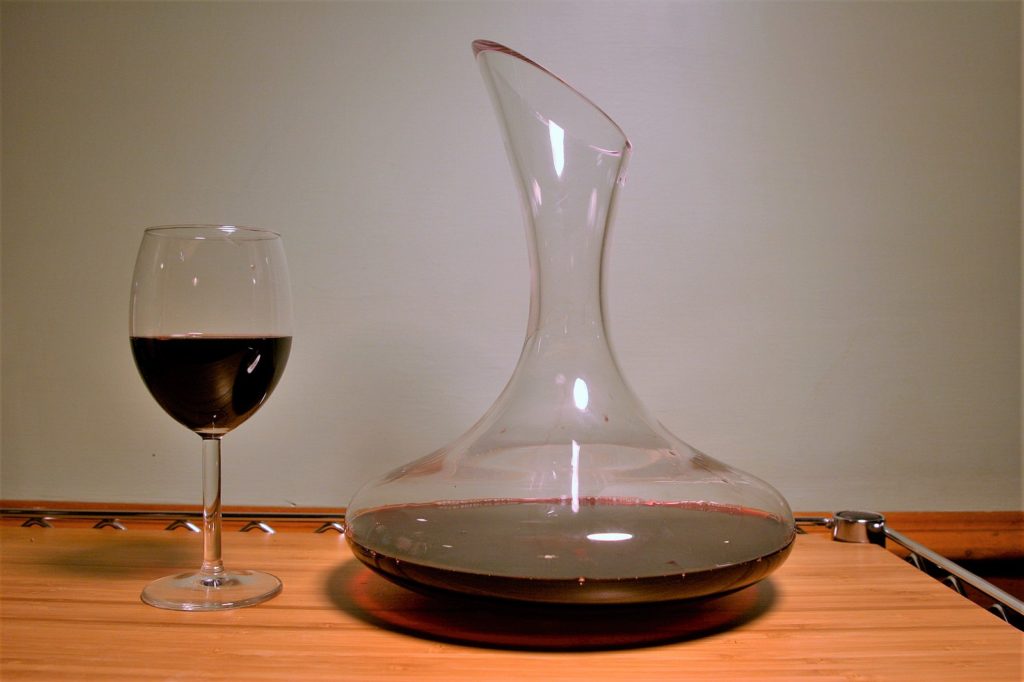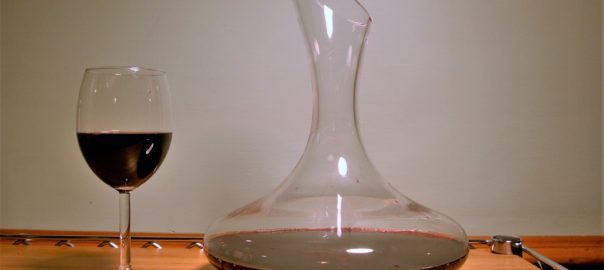When enjoying a good wine, we oftentimes opt for the easiest method of serving: from bottle to glass. In following these means, however, it is possible for sediments to also enter the drinking vessel. Sediments, it should be noted, are not harmful, but can result in unpleasant tastes that detract from enjoyment. Furthermore, in moving the wine straight from the bottle to the glass, we eliminate an opportunity for its contents to properly aerate, which ultimately deprives us of many flavors and aromas.
So, how do we resolve these challenges? A rather simple solution can be found in a decanter.
Decanters are vessels often made of glass, can be found in a variety of shapes, and have easy-to-pour spouts. While most wines can be decanted, “strong red wines particularly need to be decanted because their tannins are more intense” (Masterclass). According to Masterclass, the varietals that most benefit from decanting are Malbec, Syrah, Cabernet Sauvignon, Bordeaux, and Burgundy. Older, full bodied red wines are also excellent for decanting because they contain the most sediment. In order to properly decant a wine, patience is paramount, but can be successfully achieved by following these steps:
- 1. Prior to decanting, make sure your bottle has been standing vertically for at least one day. This will ensure that the sediment has settled at the bottom of the bottle.
- 2. Open your bottle of wine.
- 3. Carefully aim the neck of the bottle toward the decanter while making sure that the bottom of the bottle does not exceed an angle of 45 degrees. This will stop the wine from rushing towards the lip and stirring up the sediment at the bottom.
- 4. Steadily pour the wine into the decanter, all the while keeping an eye out for any sediments nearing the opening. If you see any sediment approaching, stop pouring and set the bottle down in the upright position. Continue to carefully pour.
- 5. You are finished pouring when there is approximately one ounce let in the bottle. This liquid will contain all of the unpleasant sediment you wish to leave out.

As previously mentioned, decanters are primarily used for filtering out sediments prior to drinking the wine, but they are also excellent for aeration. Through the process of pouring the wine from the bottle into the vessel, oxygen is introduced to the liquid. Decanters are specifically designed to increase the wine’s surface area, which in turn allows for greater oxidization. This softens the tannins, allows the wine to breathe and develop its flavors, and accelerates its “[coming] to life” (Smithsonian).
While decanters are proven to mitigate the threat of unwanted sediments, there is a debate over whether these vessels actually improve the taste of wine. Of course, this is entirely up to personal preference, and the only opinion that matters is your own. What we recommend, here at King Frosch, is for you to choose your favorite wine and try it both undecanted and decanted. Who knows, maybe you’re favorite will end up tasting even better than you thought possible!











